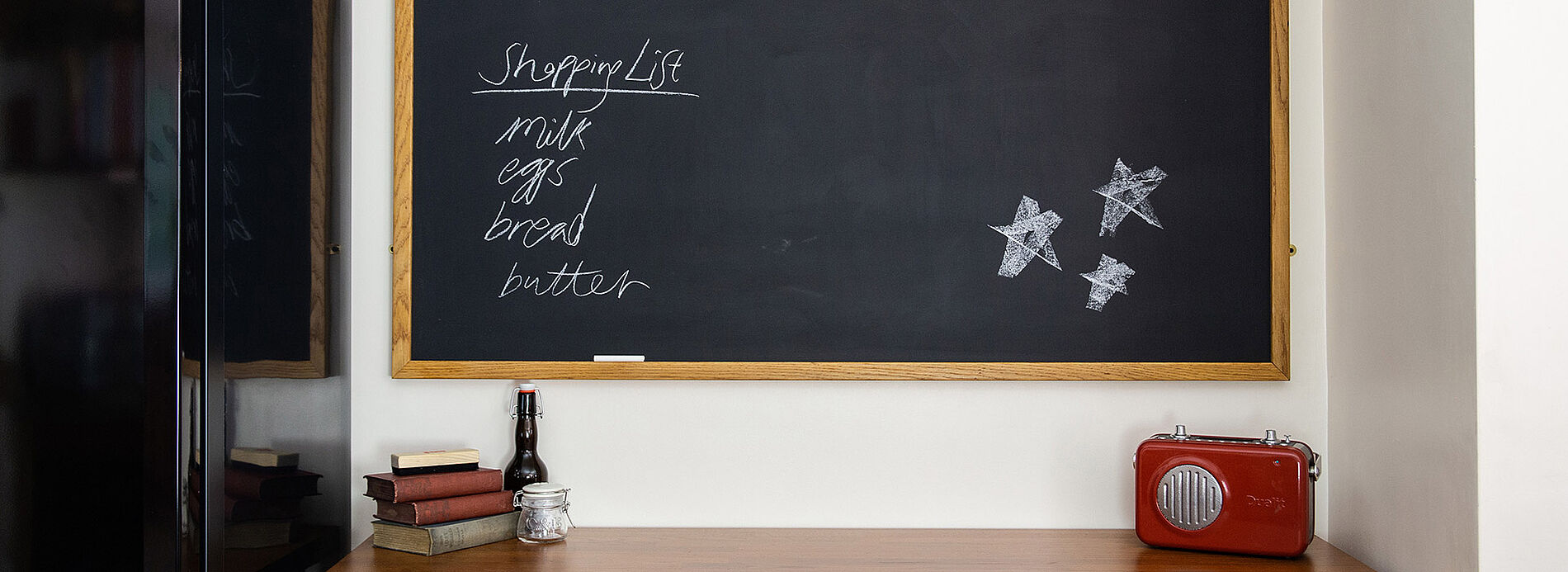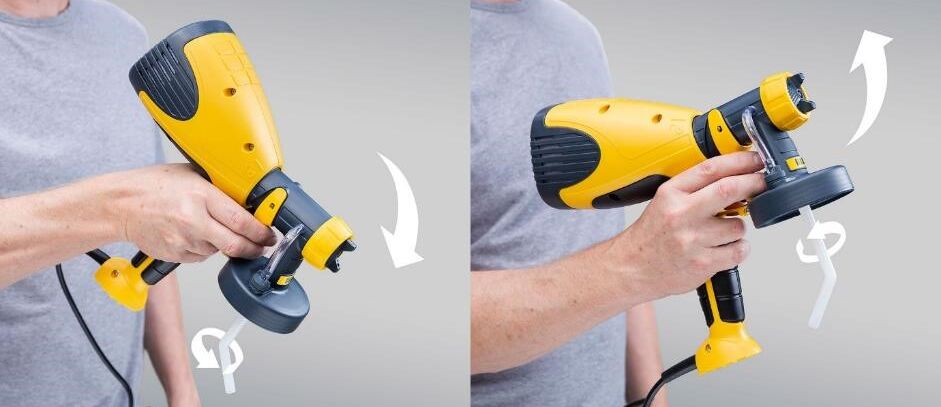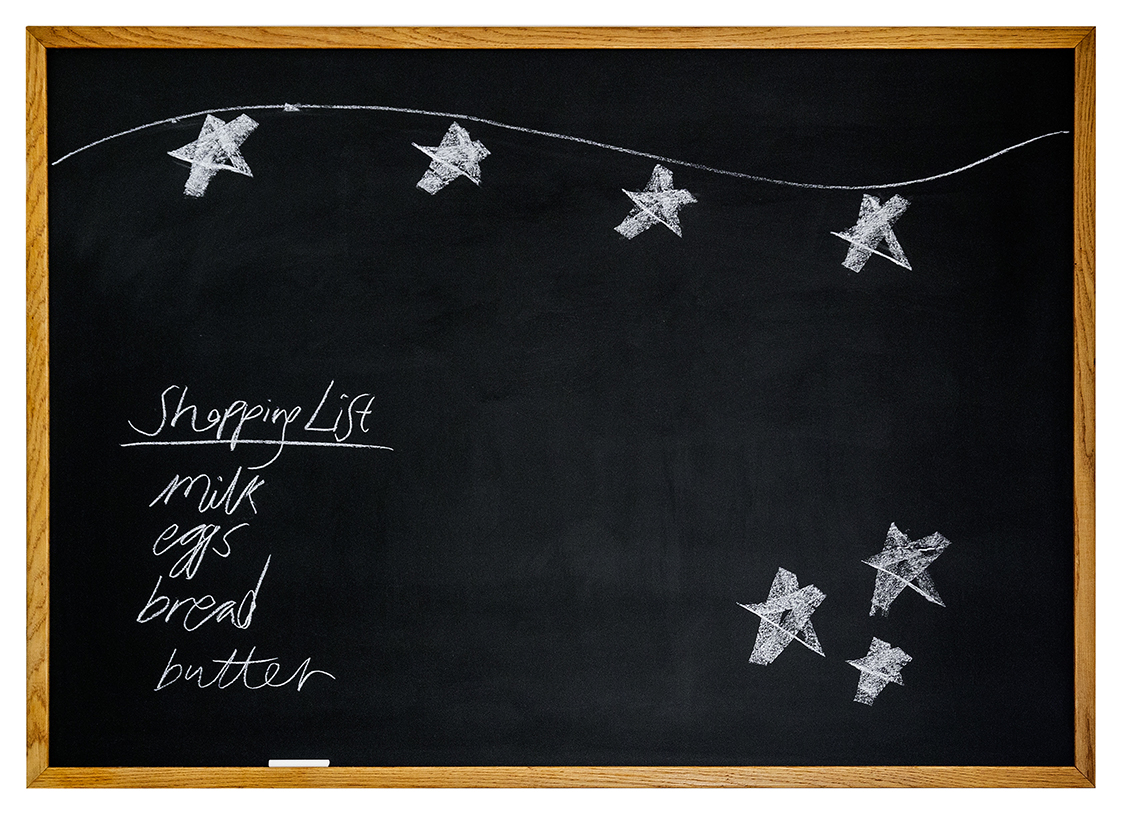Individual size and design
For quite a while now, blackboards have been making their way back into the catering trade and into our homes. As pavement stoppers in front of cafés, as hand-written food and drink boards in bars and restaurants or even as an oversized shopping list in the kitchen: with thoughts handwritten and drawn, they let us pause, slow down and be more conscious in the fast-moving digital age. It is not without reason that such places attract us almost magically and coffee tastes worlds better there.
Why create a blackboard yourself instead of buying one? Quite simply, you can not only determine the perfect size of the board, but also choose the frame based on where it will be hung. Self-made blackboards are much nicer to look at than bought ones don‘t you think?







